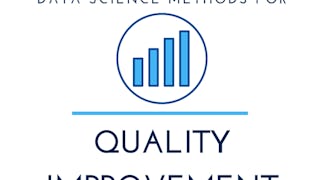"Statistical Learning for Data Science" is an advanced course designed to equip working professionals with the knowledge and skills necessary to excel in the field of data science. Through comprehensive instruction on key topics such as shrink methods, parametric regression analysis, generalized linear models, and general additive models, students will learn how to apply resampling methods to gain additional information about fitted models, optimize fitting procedures to improve prediction accuracy and interpretability, and identify the benefits and approach of non-linear models. This course is the perfect choice for anyone looking to upskill or transition to a career in data science.
通过 Coursera Plus 解锁访问 10,000 多门课程。开始 7 天免费试用。


您将学到什么
Apply resampling methods in order to obtain additional information about fitted models.
Optimize fitting procedures to improve prediction accuracy and interpretability.
Identify the benefits and approach of non-linear models.
您将获得的技能
要了解的详细信息

添加到您的领英档案
了解顶级公司的员工如何掌握热门技能

积累特定领域的专业知识
- 向行业专家学习新概念
- 获得对主题或工具的基础理解
- 通过实践项目培养工作相关技能
- 获得可共享的职业证书

该课程共有5个模块
Welcome to our Resampling, Selection, and Splines class! In this course, we will dive deep into these key topics in statistical learning and explore how they can be applied to data science. The module provides an introductory overview of the course and introduces the course instructor.
涵盖的内容
6个视频2篇阅读材料1个讨论话题
In this module, we will turn our attention to generalized least squares (GLS). GLS is a statistical method that extends the ordinary least squares (OLS) method to account for heteroscedasticity and serial correlation in the error terms. Heteroscedasticity is the condition where the variance of the errors is not constant across all levels of the predictor variables, while serial correlation is the condition where the errors are correlated across time or space. GLS has many practical applications, such as in finance for modeling asset returns, in econometrics for modeling time series data, and in spatial analysis for modeling spatially correlated data. By the end of this module, you will have a good understanding of how GLS works and when it is appropriate to use it. You will also be able to implement GLS in R using the gls() function in the nlme package.
涵盖的内容
1个视频1篇阅读材料1个编程作业1个非评分实验室
In this module, we will explore ridge regression, LASSO, and principal component analysis (PCA). These techniques are widely used for regression and dimensionality reduction tasks in machine learning and statistics.
涵盖的内容
7个视频3篇阅读材料3个编程作业
This week, we will be exploring the concept of cross-validation, a crucial technique used to evaluate and compare the performance of different statistical learning models. We will explore different types of cross-validation techniques, including k-fold cross-validation, leave-one-out cross-validation, and stratified cross-validation. We will discuss their strengths, weaknesses, and best practices for implementation. Additionally, we will examine how cross-validation can be used for model selection and hyperparameter tuning.
涵盖的内容
1个视频1篇阅读材料1个编程作业
For our final module, we will explore bootstrapping. Bootstrapping is a resampling technique that allows us to gain insights into the variability of statistical estimators and quantify uncertainty in our models. By creating multiple simulated datasets through resampling, we can explore the distribution of sample statistics, construct confidence intervals, and perform hypothesis testing. Bootstrapping is particularly useful when parametric assumptions are hard to meet or when we have limited data. By the end of this week, you will have an understanding of bootstrapping and its practical applications in statistical learning.
涵盖的内容
1个视频1篇阅读材料1个编程作业
获得职业证书
将此证书添加到您的 LinkedIn 个人资料、简历或履历中。在社交媒体和绩效考核中分享。
攻读学位
课程 是 University of Colorado Boulder提供的以下学位课程的一部分。如果您被录取并注册,您已完成的课程可计入您的学位学习,您的学习进度也可随之转移。
位教师

从 Probability and Statistics 浏览更多内容
 状态:免费试用
状态:免费试用University of Colorado Boulder
 状态:预览
状态:预览Microsoft
 状态:免费试用
状态:免费试用University of Colorado Boulder
 状态:免费试用
状态:免费试用University of Colorado Boulder
人们为什么选择 Coursera 来帮助自己实现职业发展




常见问题
To access the course materials, assignments and to earn a Certificate, you will need to purchase the Certificate experience when you enroll in a course. You can try a Free Trial instead, or apply for Financial Aid. The course may offer 'Full Course, No Certificate' instead. This option lets you see all course materials, submit required assessments, and get a final grade. This also means that you will not be able to purchase a Certificate experience.
When you enroll in the course, you get access to all of the courses in the Specialization, and you earn a certificate when you complete the work. Your electronic Certificate will be added to your Accomplishments page - from there, you can print your Certificate or add it to your LinkedIn profile.
Yes. In select learning programs, you can apply for financial aid or a scholarship if you can’t afford the enrollment fee. If fin aid or scholarship is available for your learning program selection, you’ll find a link to apply on the description page.
更多问题
提供助学金,



